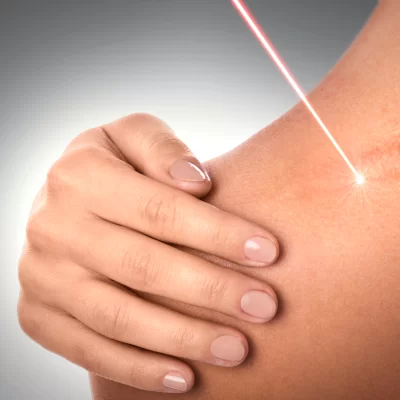Ablative fractional lasers - the key to self-regeneration
Ablative fractional laser treatments have been considered one of the most effective procedures in aesthetic medicine for many years. They also perfectly align with the current trend of living in harmony with nature, as they utilize natural regeneration processes in our bodies. Let's take a closer look at them.
Ablation is the process of evaporating water in cells due to rapid heating with a laser beam. Along with the water, the tissue in which this water was located also evaporates. Ablation has been used in medicine for many years (especially in cardiothoracic surgery). In the case of the skin, ablation triggers regeneration processes and contracts collagen fibers. The latter thickens the skin, making it firmer and more elastic. The regenerative processes rejuvenate the skin, making it smoother, more even in texture and tone. All benefits. And the downsides? Recovery time. The early ablative lasers from the early 1960s had a relatively large treatment area (up to several mm²), resulting in significantly prolonged recovery time and a very painful procedure.
Necessity is the mother of invention, so scientists faced with this problem invented fractional lasers.
The term "fractional" means division into parts. And that's how the name of these lasers should be literally interpreted. Instead of a broad impact, fractional lasers create point-like pulses evenly distributed over the treatment surface. This results in columns of evaporated tissues.
Fractionation allows for shorter skin healing time while maintaining the effectiveness of the procedure.
Strong tissue damage at the laser treatment site triggers regeneration processes. What distinguishes lasers is that their high temperature particularly affects heat shock proteins (HSP). These proteins are among the most potent catalysts of regeneration. Their activation is responsible for initiating the production of additional collagen and elastin, which are responsible for the condition and appearance of our skin.
Ablative treatments damage the skin at the epidermis level, but some fractional lasers allow for action bypassing the epidermal layer, targeting only deeper layers of the skin, which also has its advantages.
In summary, ablative fractional lasers allow us to improve the appearance and health of our skin in a way that is natural for our bodies.
We recommend
Fractional lasers deliver excellent results in removing stretch marks. Laser therapy uses light to reach deep into the sublayers of the skin to repair and regenerate skin cells. Laser energy creates controlled micro-injuries in the tissue and stimulates protein coagulation and water evaporation, resulting in the multiplication of collagen fibers and the formation of new skin cells in the stretch mark areas. Rebuilding damaged tissue results in smoother skin with improved texture and color. Although laser therapy may not make stretch marks disappear completely, it can significantly smooth and lighten them.

